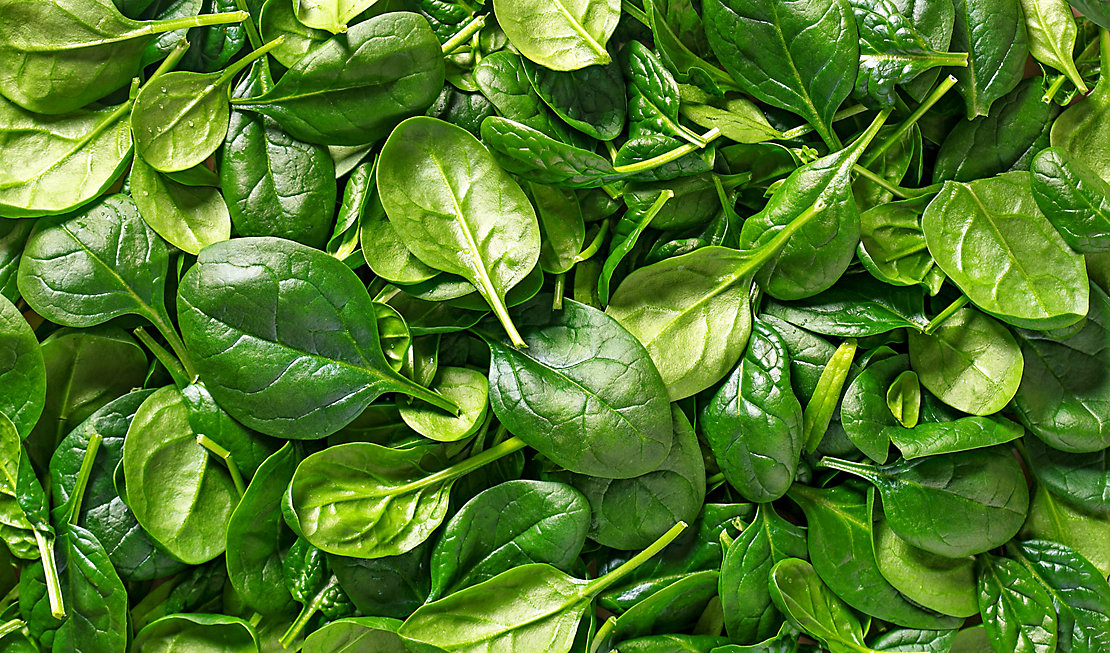Many people feel their vision steadily getting worse as a consequence of aging or just after a long day spent in front of screens. But that doesn’t have to be the case. What most people don’t know is something as simple as making the right food choices and/or taking a daily eye supplement can help maintain eye health.

Dietary carotenoids lutein and zeaxanthin are important nutrients that the body naturally deposits in the back of the eye creating a yellow protective layer, known as macular pigment [1]. The density of this depends entirely on the daily richness of our diet in foods containing these molecules, mainly fruits and vegetables[2]. Richest food sources of lutein are all dark green leafy vegetables in particular kale and spinach which contain 40 mg and 12 mg lutein in 100g serving, respectively[3].
Getting enough of these nutrients through diet every day can be difficult. The body of scientific literature supports the daily intake of 10 mg of lutein and 2 mg of zeaxanthin. In western countries, most adults only get 1/10 to 1/3 of it – just a fraction of the amount needed to protect their eyes and to improve visual performance[4–6].
There is actually a simple test that can tell our status in lutein and zeaxanthin. It measures how dense the macular pigment is and it correlates directly with the diet[7,8]. The test is based on the ability of the macular carotenoids to absorb blue light and is expressed as macular pigment optical density (MPOD)[9].
See the science on vision
Scientific research has demonstrated that a richer, denser macular pigment, or higher MPOD, can improve visual performance[10–12]. This benefit is associated with the ability of lutein and zeaxanthin to absorb blue light, the part of the visible light spectrum – remember the rainbow? – with the highest energy. Blue light is known to negatively impact the quality of our vision[13].
A rich macular pigment improves contrast sensitivity thus helping to define shapes that aren’t clearly outlined, such as objects in shadows, light colored objects against a bright sky. Good contrast sensitivity also improves vision in low-light conditions, allowing us to see finer and sharper details in dim light. If you’re playing baseball, golf, or tennis increased contrast sensitivity should be able to help you be on your game[11,12,14–17].
Glare (very bright light that is difficult to look at) affects all of us in a variety of everyday circumstances. In fact, over half of adults say they experience glare problems when driving at night[18]. Being sensitive to intense light may cause a temporary blinding effect, like that of approaching headlights while driving at night impacting the time you need to recover vision. Research shows that daily supplementation with 10 mg lutein and 2 mg zeaxanthin results in higher MPOD levels that can help increase tolerance to the intensity of glaring light as well as significantly improve vision recovery time (photostress recovery)[15].
Ready to upgrade your eye supplements?

Subscribe to our Blog
References:
- Bone, R.A.; Landrum, J.T.; Fernandez, L.; Tarsis, S.L. Analysis of the Macular Pigment by HPLC: Retinal Distribution and Age Study. Investig. Ophthalmol. Vis. Sci. 1988, 29, 843–849.
- Maoka, T. Carotenoids as Natural Functional Pigments. J. Nat. Med. 2020, 74, 1–16, doi:10.1007/s11418-019-01364-x.
- Holden, J.M.; Eldridge, A.L.; Beecher, G.R.; Marilyn Buzzard, I.; Bhagwat, S.; Davis, C.S.; Douglass, L.W.; Gebhardt, S.; Haytowitz, D.; Schakel, S. Carotenoid Content of U.S. Foods: An Update of the Database. J. Food Compos. Anal. 1999, 12, 169–196, doi:10.1006/jfca.1999.0827.
- Kruger, C.L.; Murphy, M.; DeFreitas, Z.; Pfannkuch, F.; Heimbach, J. An Innovative Approach to the Determination of Safety for a Dietary Ingredient Derived from a New Source: Case Study Using a Crystalline Lutein Product. Food Chem. Toxicol. 2002, 40, 1535–1549, doi:10.1016/S0278-6915(02)00131-X.
- Granado, F.; Blásquez. S; Olmedilla, B. Changes in Carotenoid Intake from Fruit and Vegetables in the Spanish Population over the Period 1964 2004. Pubblic Heal. Nutr. Heal. Nutr. 2007, 10, 1018–1023, doi:10.1017/S1368980007662314.
- Institute of Medicine Dietary Reference Intakes for Vitamin C, Vitamin E, Selenium, and Carotenoids.; The National Academies Press. Washington, DC, 2000; ISBN 9780309069496.
- Hammond, B.R.; Johnson, E.J.; Russell, R.M.; Krinsky, N.I.; Yeum, K.J.; Edwards, R.B.; Snodderly, D.M. Dietary Modification of Human Macular Pigment Density. Investig. Ophthalmol. Vis. Sci. 1997, 38, 1795–1801.
- Burke, J.D.; Curran-Celentano, J.; Wenzel, A.J. Diet and Serum Carotenoid Concentrations Affect Macular Pigment Optical Density in Adults 45 Years and Older. J. Nutr. 2005, 135, 1208–1214, doi:10.1093/jn/135.5.1208.
- Bernstein, P.S.; Delori, F.C.; Richer, S.; van Kuijk, F.J.M.; Wenzel, A.J. The Value of Measurement of Macular Carotenoid Pigment Optical Densities and Distributions in Age-Related Macular Degeneration and Other Retinal Disorders. Vision Res. 2010, 50, 716–728, doi:10.1016/j.visres.2009.10.014.
- Stringham, J.M.; Hammond, B.R. The Glare Hypothesis of Macular Pigment Function. Optom. Vis. Sci. 2007, 84, 859–864, doi:10.1097/OPX.0b013e3181559c2b.
- Stringham, J.M.; Garcia, P. V.; Smith, P.A.; McLin, L.N.; Foutch, B.K. Macular Pigment and Visual Performance in Glare: Benefits for Photostress Recovery, Disability Glare, and Visual Discomfort. Investig. Ophthalmol. Vis. Sci. 2011, 52, 7406–7415, doi:10.1167/iovs.10-6699.
- Hammond, B.R.; Fletcher, L.M.; Elliott, J.G. Glare Disability, Photostress Recov Ery, and Chromatic Contrast: Relation to Macular Pigment and Serum Lutein and Zeaxanthin. Investig. Ophthalmol. Vis. Sci. 2013, doi:10.1167/iovs.12-10411.
- Wooten, B.R.; Hammond, B.R. Macular Pigment: Influences on Visual Acuity and Visibility. Prog. Retin. Eye Res. 2002, 21, 225–240, doi:10.1016/S1350-9462(02)00003-4.
- Stringham, J.M.; Hammond, B.R. The Glare Hypothesis of Macular Pigment Function. Optom. Vis. Sci. 2007, 84, 859–864, doi:10.1097/OPX.0b013e3181559c2b.
- Stringham, J.M.; Hammond, B.R. Macular Pigment and Visual Performance under Glare Conditions (Optometry and Vision Science (2008) 85 (82-88)). Optom. Vis. Sci. 2008, 85, 82–88, doi:10.1097/OPX.0b013e318162266e.
- Stringham, J.M.; O’Brien, K.J.; Stringham, N.T. Macular Carotenoid Supplementation Improves Disability Glare Performance and Dynamics of Photostress Recovery. Eye Vis. 2016, 3, 1–8, doi:10.1186/s40662-016-0060-8.
- Renzi, L.M.; Hammond, B.R. The Relation between the Macular Carotenoids, Lutein and Zeaxanthin, and Temporal Vision. Ophthalmic Physiol. Opt. 2010, 30, 351–357, doi:10.1111/j.1475-1313.2010.00720.x.
- RAC Drivers Who Suffer Glare from Headlights Say the Problem Is Getting Worse 2019, 1–7.
These statements have not been evaluated by the US Food and Drug Administration. This product is not intended to diagnose, treat, cure or prevent any disease.
The information on this webpage is a business-to-business information and not intended for the final consumer. Certain statements may not be applicable in all geographical regions. Product labeling and associated claims differs based upon government requirements and country or region specific information should also be considered when labeling or advertising to final consumers.
This web page and its associated brochures and other documents do not constitute or provide scientific or medical advice, diagnosis, or treatment and are distributed without warranty of any kind, either expressly or implied. This web page, its title or contents and associated brochures and other documents do not in any way make recommendations for health or marketing claims by the reader. Country and region specific regulations should be considered in this regard. Each claim or statement about the effectiveness of Kemin products and/or each claim or statement comparing the effectiveness of Kemin products to the effectiveness of other products is expressly limited to the United States, unless otherwise disclosed on the Kemin websites.
FloraGLO® Lutein for Eye Health
-1?$featuredContent2$)
Level up your gaming & eSports formulations

FloraGLO® Lutein

FloraGLO® Lutein for Eye Health
